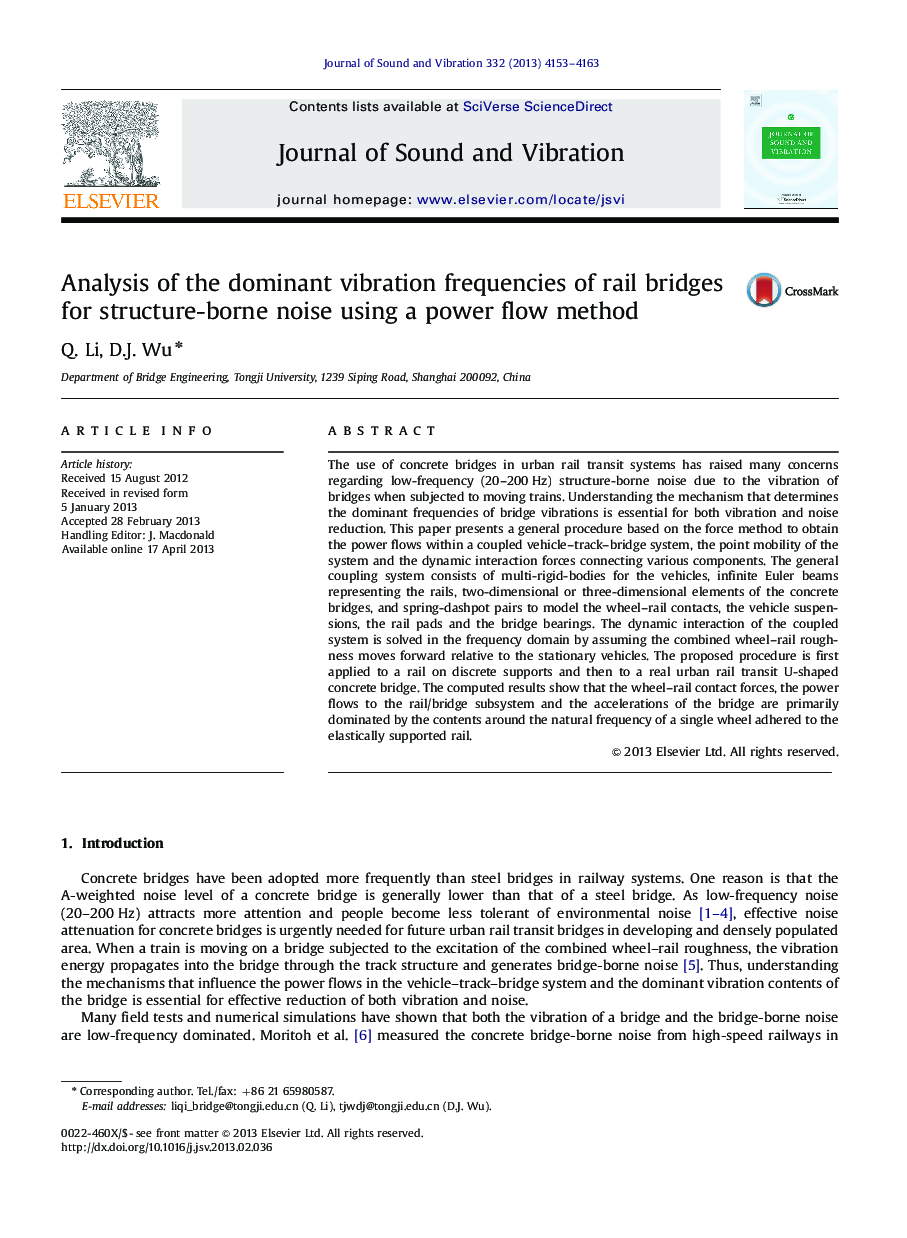| کد مقاله | کد نشریه | سال انتشار | مقاله انگلیسی | نسخه تمام متن |
|---|---|---|---|---|
| 288138 | 509607 | 2013 | 11 صفحه PDF | دانلود رایگان |

The use of concrete bridges in urban rail transit systems has raised many concerns regarding low-frequency (20–200 Hz) structure-borne noise due to the vibration of bridges when subjected to moving trains. Understanding the mechanism that determines the dominant frequencies of bridge vibrations is essential for both vibration and noise reduction. This paper presents a general procedure based on the force method to obtain the power flows within a coupled vehicle–track–bridge system, the point mobility of the system and the dynamic interaction forces connecting various components. The general coupling system consists of multi-rigid-bodies for the vehicles, infinite Euler beams representing the rails, two-dimensional or three-dimensional elements of the concrete bridges, and spring-dashpot pairs to model the wheel–rail contacts, the vehicle suspensions, the rail pads and the bridge bearings. The dynamic interaction of the coupled system is solved in the frequency domain by assuming the combined wheel–rail roughness moves forward relative to the stationary vehicles. The proposed procedure is first applied to a rail on discrete supports and then to a real urban rail transit U-shaped concrete bridge. The computed results show that the wheel–rail contact forces, the power flows to the rail/bridge subsystem and the accelerations of the bridge are primarily dominated by the contents around the natural frequency of a single wheel adhered to the elastically supported rail.
Journal: Journal of Sound and Vibration - Volume 332, Issue 18, 2 September 2013, Pages 4153–4163